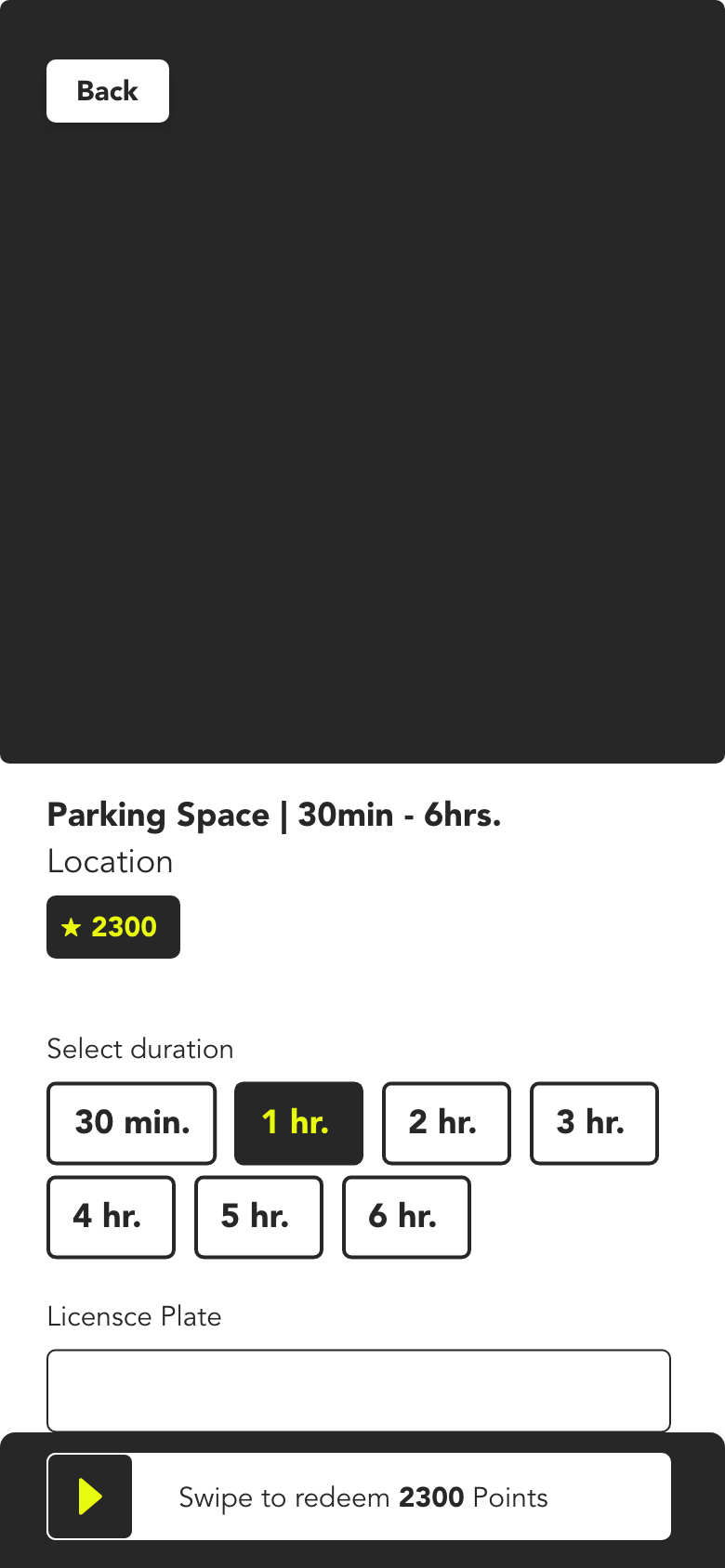ALTECO is a conceptualized digital product in collaboration with the City of Toronto’s public transit agencies and Bike Share program. It rewards your eco-friendly transportation habits such as walking, taking public transit, and biking and converts them into currency which can be used to redeem parking spaces and public transit passes.
My Role
Product design - Mobile Application
User research
Prototyping, UI design
Video editor, motion graphics
Product design - Mobile Application
User research
Prototyping, UI design
Video editor, motion graphics
Results
A digital product that promotes a low carbon economy
Collaboration with the City of Toronto
Reimagining daily transporation/car habits
A digital product that promotes a low carbon economy
Collaboration with the City of Toronto
Reimagining daily transporation/car habits

Conceptualized ALTECO ad campaign
Small habits, big changes: Reimagining our daily transportation habits and car usage
ALTECO allows you to connect your existing PRESTO/Bike Share account (or without) and track your personal bike distance, where you can then earn points based on your distance; per type of vehicle (i.e. bike (least emissions = more points) / bus (higher emissions = lesser points). However, the importance of the emissions emitted by these types of transportation is inapplicable because they are all valid as alternatives to a car, which we may highly depend on. ALTECO seeks to encourage healthy transportation habits for a long period of time.
It looks into small habit changes, which can turn into big solutions.
ALTECO doesn’t want you to stop using a car. However it hopes to inspire its users to adapt a balanced lifestyle when it comes to your use of transportation. For example when using ALTECO, you may want to take public transit on weekends, instead of using your car everyday.
ALTECO doesn’t want you to stop using a car. However it hopes to inspire its users to adapt a balanced lifestyle when it comes to your use of transportation. For example when using ALTECO, you may want to take public transit on weekends, instead of using your car everyday.
Preliminary Research
As we know that climate change is a threatening global issue, I wanted to get a better understanding on Toronto’s influence on the subject and hopefully find a digital solution to conserve our planet. I reviewed existing literature to gain understanding of the city’s current efforts and contribution of greenhouse gasses, where I covered documentations on TransformTO, Ontario’s Climate Change Action Plan, Incentive Theory, etc.
My preliminary research has led me to formulate my research question
Summary of preliminary research findings
Toronto is currently not on track to meet its 2030 and 2050 climate targets
People are pulled toward behaviours that lead to rewards
Gamification can help trigger a sense of achievement and motivation
Research Question
︎How can we use parking incentives to shift one’s behaviour in becoming more sustainable?
User Research & Findings: Empathy Mapping & Competitor Analysis
I used empathy mapping as a tool to help me build empathy towards the potential audience. I believe this strategy allowed me to get to know my users by understanding their tasks, influences, feelings, pain points & gains, and their overall goals.
![]()

Empathy Map
Since I’ve decided to explore the theory of incentive in the realm of transportation, I used a competitor analysis as a strategy to identify possible competitors in this industry. I looked into digital products that fall within the domain of eco-friendly initiatives and incentivization. My goal was to understand my competitors’ strengths and weaknesses in comparison to my own and find a gap in the market, where ALTECO could exist.
![]()

Competitor Analysis
Who are the users?
Drivers
Public transit commuters
Bikers
Environmentally conscious individuals
Light gamers
Individuals who seeks to be active
Drivers
Public transit commuters
Bikers
Environmentally conscious individuals
Light gamers
Individuals who seeks to be active
What are the user needs?
Convenience
Efficiency
Culture and community
Information
Social
Stimulation
Maintainability
Diving into my design process
Wireframing allowed me to critically review how a user will navigate through the mobile application in the early design stages. It enabled me to predict any issues with the user experience, and how to improve it right away before designing the final prototype.





Early Wireframes
Key design elements
︎Convenience
• Connect to PRESTO & Bike Share accounts
• User Control; for users without PRESTO or Bike Share accounts
︎Efficiency
• Digestible information
• Does not rely on numbers and figures, which may cause an overload of information
• Ease of navigation
• Connect to PRESTO & Bike Share accounts
• User Control; for users without PRESTO or Bike Share accounts
︎Efficiency
• Digestible information
• Does not rely on numbers and figures, which may cause an overload of information
• Ease of navigation

First round of high-fidelity wireframes: Home/Dashboard, “My Activity”
︎Social
• Provide a sense of community
• Learn about your city and its current efforts
︎Gamification
• Sense of achievement
• Promotes the use of the app for a longer period of time
• Reward system
• Provide a sense of community
• Learn about your city and its current efforts
︎Gamification
• Sense of achievement
• Promotes the use of the app for a longer period of time
• Reward system

First round of high-fidelity wireframes: Collect points; public transit & biking
︎Incentives
• Promotes motivation to reach a goal
• Rewards that hold value (i.e parking spaces, transit passes)
• Encourages habits or behaviours
• Promotes motivation to reach a goal
• Rewards that hold value (i.e parking spaces, transit passes)
• Encourages habits or behaviours

First round of high-fidelity wireframes: Rewards page, Redeeming a parking space
User Testing
I conducted a cognitive walkthrough as a usability testing method to test the main pathways of my app. This was completed through asking participants to perform the following tasks:
1. Connect your Bike Share/PRESTO account to the app
2. Collect points for a bus trip without a linked PRESTO account
3. Track your personal bike distance
1. Connect your Bike Share/PRESTO account to the app
2. Collect points for a bus trip without a linked PRESTO account
3. Track your personal bike distance
These tasks are designed to explore the user’s behaviour through the interface and uncover any issues that may bring discourse to their goals.
User Testing Insights
Visibility
Users correlate the displayed image of “Public Transit” only as a subway and not other forms of public transit (i.e. bus) [See Fig. 1]
Prone to error and false information
The process of earning points without a PRESTO enables users to input false information in order to get more points [See Fig. 2]
Users correlate the displayed image of “Public Transit” only as a subway and not other forms of public transit (i.e. bus) [See Fig. 1]
Prone to error and false information
The process of earning points without a PRESTO enables users to input false information in order to get more points [See Fig. 2]

“Public Transit” button (left); Input trip details (right)
Consistency
Users identified “Walking” status (My Steps Today) as a button even though it is not intended to be so. [See Fig. 3]
Element of competition
Ability to compete with other users can create a sense of competition which can induce more positive environmental behaviours
Users identified “Walking” status (My Steps Today) as a button even though it is not intended to be so. [See Fig. 3]
Element of competition
Ability to compete with other users can create a sense of competition which can induce more positive environmental behaviours

“My Steps Today” appears as a button
From ideas to concrete solutions
Design Solutions
Compatible services are stored in an icon, for users who want to learn more about the function.
“My Steps Today” has been redesigned to appear as a status, rather than a button.
Compatible services are stored in an icon, for users who want to learn more about the function.
“My Steps Today” has been redesigned to appear as a status, rather than a button.

Final prototype
A two-step verification allows for more
accurate point tracking for users without a PRESTO account.
accurate point tracking for users without a PRESTO account.

Final prototypes
The following is ALTECO’s system map, which visually shows the different components and functions of the product, along with the relationship between them. It depicts its eco-system and how it exists with particular external services in collaboration with ALTECO.

System Mapping
Final Prototype
ALTECO Concept Promo

